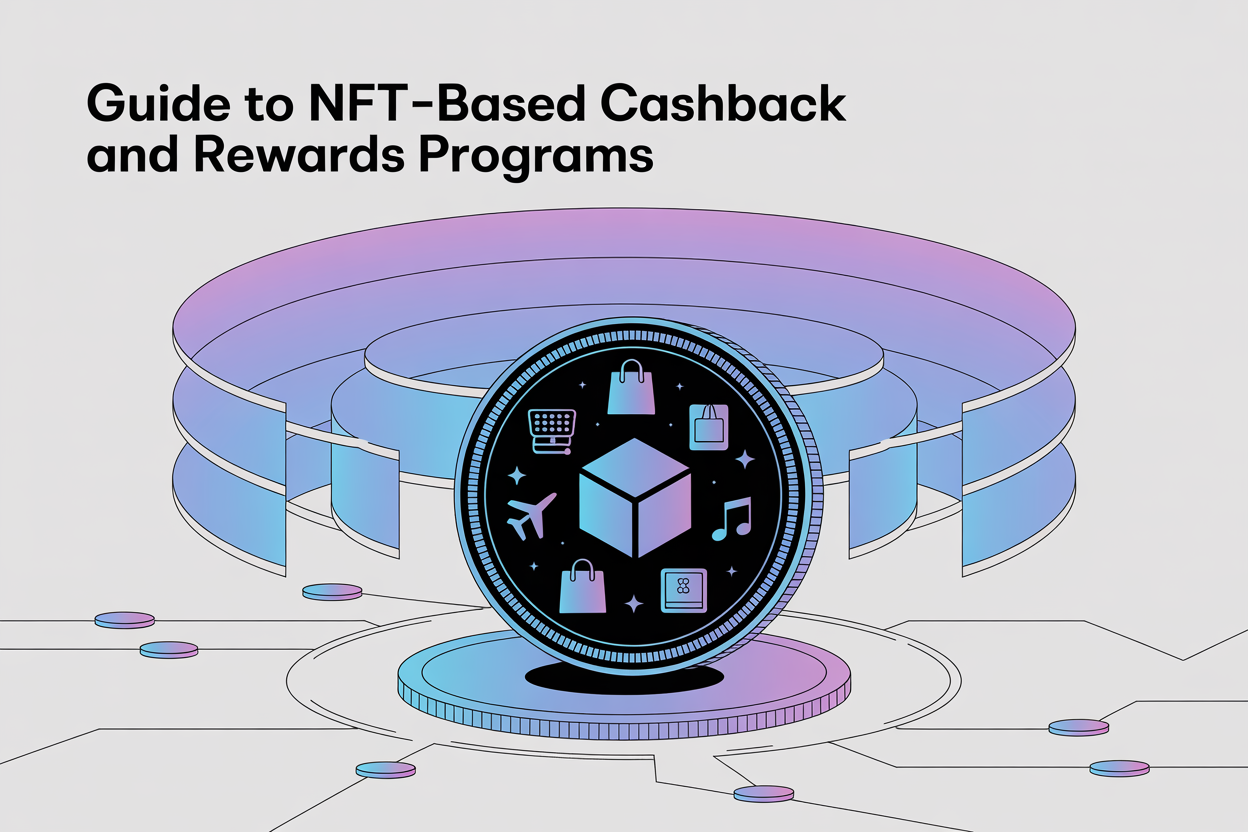Now Reading: The Ultimate Guide to Optimizing Crypto Staking Rewards
- 01
The Ultimate Guide to Optimizing Crypto Staking Rewards
The Ultimate Guide to Optimizing Crypto Staking Rewards

Crypto staking has become increasingly popular, and understanding how to maximize crypto staking rewards is crucial for investors. To increase staking rewards, it’s essential to grasp the fundamentals of crypto staking and the strategies involved. This guide will provide an overview of the basics, including crypto staking tips and how to maximize returns.
Investors can benefit from learning how to maximize crypto staking rewards by following proven strategies and best practices. By applying effective crypto staking tips, investors can increase staking rewards and optimize their returns. This guide will cover the essential factors affecting staking rewards and provide insights on how to optimize crypto staking rewards.
Introduction to Crypto Staking
Crypto staking involves holding and validating cryptocurrency transactions to earn rewards. To get started, investors need to understand the basics of crypto staking and how to select the right cryptocurrencies for staking. By following this guide, investors can learn how to increase staking rewards and make informed decisions.
Key Takeaways
- Understanding the fundamentals of crypto staking is essential to maximize returns
- Effective crypto staking tips can help increase staking rewards
- Selecting the right cryptocurrencies is crucial for optimizing crypto staking rewards
- Investors need to consider essential factors affecting staking rewards
- Applying proven strategies can help investors maximize crypto staking rewards
- Crypto staking requires a thorough understanding of the underlying technology and market conditions
- Staying up-to-date with the latest crypto staking trends and best practices is vital for success
Understanding the Fundamentals of Crypto Staking
To succeed in crypto staking, it’s essential to grasp the underlying principles. Earning more from staking requires a deep understanding of the staking strategy and best staking practices. At its core, crypto staking is a process that allows cryptocurrency holders to participate in the validation of transactions on a blockchain network.
A well-planned staking strategy can significantly impact the rewards earned. By adopting best staking practices, such as diversifying a portfolio and timing stakes effectively, individuals can maximize their returns. Different types of staking models also play a crucial role in determining the level of participation and potential earnings.
What is Proof of Stake (PoS)?
Proof of Stake (PoS) is a consensus algorithm that enables the creation of new blocks on a blockchain. In a PoS system, validators are chosen to create a new block based on the amount of cryptocurrency they hold, or “stake,” rather than their computational power.
Basic Staking Mechanics
Staking mechanics involve the process of locking up a certain amount of cryptocurrency in a wallet or on a staking platform. This locked-up amount is then used to validate transactions on the blockchain, and in return, the staker earns a reward in the form of additional cryptocurrency.
Different Types of Staking Models
There are various staking models available, each with its own set of benefits and drawbacks. Some common models include solo staking, pooled staking, and delegated staking. By understanding the different types of staking models, individuals can make informed decisions about their staking endeavors and develop an effective staking strategy to earn more from staking.
Selecting the Right Cryptocurrencies for Staking
To achieve crypto staking rewards optimization, it’s crucial to choose the right cryptocurrencies for staking. This involves considering several factors, including market capitalization, staking rewards, and network security.
When selecting cryptocurrencies, investors should look for options with a strong market presence and a proven track record of providing maximizing staking profits. Some popular choices include Ethereum, which offers a well-established staking mechanism, as well as lesser-known alternatives that may offer more competitive staking rewards.
Some key factors to consider when evaluating cryptocurrencies for staking include:
- Market capitalization: A higher market capitalization can indicate a more stable and secure network.
- Staking rewards: Cryptocurrencies with higher staking rewards can provide greater potential for maximizing staking profits.
- Network security: A secure network is essential for protecting staked assets and ensuring the integrity of the staking process.
By carefully evaluating these factors and choosing the right cryptocurrencies, investors can optimize their staking strategy and achieve greater returns through maximizing staking profits and effective crypto staking rewards optimization.
Essential Factors Affecting Staking Rewards
To achieve staking rewards growth, it’s crucial to understand the factors that influence your returns. When participating in crypto staking, investors should consider the minimum stake requirements, lock-up periods, and network participation rates. These factors can significantly impact your ability to increase staking rewards.
For instance, crypto staking rewards can be affected by the minimum stake requirements, which vary depending on the cryptocurrency and staking platform. Lock-up periods also play a significant role, as they determine how long your assets are tied up and unable to be sold or transferred.
Some key factors to consider include:
- Minimum stake requirements: The amount of cryptocurrency required to participate in staking.
- Lock-up periods: The duration for which your assets are locked and unable to be sold or transferred.
- Network participation rates: The percentage of validators or nodes participating in the network, which can impact the security and efficiency of the blockchain.
By understanding these factors and how they impact staking rewards, investors can develop strategies to optimize their returns and achieve staking rewards growth. This may involve choosing cryptocurrencies with lower minimum stake requirements or selecting staking platforms with more flexible lock-up periods. Ultimately, the key to increasing staking rewards is to stay informed and adapt to the ever-changing landscape of crypto staking.
Platform Selection: Centralized vs Decentralized Staking
When it comes to crypto staking, choosing the right platform is crucial for maximizing rewards and minimizing risks. A well-planned staking strategy involves considering the benefits and drawbacks of centralized and decentralized staking options. Centralized staking platforms offer a more user-friendly experience, with many providing crypto staking tips and guidance for beginners. However, they may lack the flexibility and security of decentralized alternatives.
In contrast, decentralized staking platforms offer greater control and autonomy, allowing users to manage their stakes directly. This approach can be more complex, but it also provides a higher level of security and transparency. By understanding the differences between these two options, investors can develop a staking strategy that suits their needs and goals. Whether you’re a seasoned investor or just starting out, it’s essential to weigh the pros and cons of each platform type to make an informed decision.
Some key factors to consider when selecting a staking platform include security, fees, and user experience. By evaluating these factors and considering your individual needs, you can create a staking strategy that helps you achieve your crypto investment goals. With the right platform and a well-planned approach, you can maximize your crypto staking rewards and build a successful investment portfolio.
Ultimately, the choice between centralized and decentralized staking platforms depends on your individual preferences and priorities. By considering the benefits and drawbacks of each option and developing a thoughtful staking strategy, you can make the most of your crypto investments and achieve long-term success.
How to Maximize Crypto Staking Rewards Through Strategic Planning
Maximizing staking profits requires a well-thought-out strategy, including timing your stakes, diversifying your portfolio, and optimizing compound interest. To achieve staking rewards optimization, it’s essential to understand the importance of strategic planning in crypto staking. By doing so, you can increase your chances of maximizing staking profits and achieving your investment goals.
When it comes to timing your stakes, it’s crucial to consider the current market conditions and the lock-up periods required for each cryptocurrency. Diversification strategies can also play a significant role in minimizing risks and maximizing returns. This can be achieved by spreading your investments across different cryptocurrencies and staking platforms.
To further optimize your staking rewards, consider the following tips:
- Start with a solid understanding of the cryptocurrency market and the staking process
- Set clear investment goals and risk tolerance
- Choose a reputable staking platform that aligns with your goals
- Monitor and adjust your strategy regularly to ensure staking rewards optimization
By following these tips and maintaining a strategic approach to crypto staking, you can increase your chances of maximizing staking profits and achieving long-term success in the cryptocurrency market.
Security Measures for Safe Staking
When it comes to crypto staking, security is a top priority. To ensure safe staking, it’s essential to follow best practices and stay informed about potential security risks. One of the most critical crypto staking tips is to use a secure wallet, such as a hardware wallet, to store your cryptocurrencies.
A well-planned staking strategy should include regular software updates, two-factor authentication, and monitoring of your accounts for any suspicious activity. By following these crypto staking tips, you can minimize the risk of your cryptocurrencies being compromised.
Some additional security measures to consider include:
- Using strong, unique passwords for all accounts
- Enabling two-factor authentication whenever possible
- Regularly updating software and wallets

By following these security measures and staying informed about potential risks, you can help ensure safe staking and protect your investments. Remember to always prioritize security when developing your staking strategy, and don’t hesitate to seek advice from reputable sources if you’re unsure about any aspect of the process.
Advanced Staking Techniques for Higher Yields
For experienced stakers, advanced techniques can help increase yields and achieve staking rewards growth. One way to do this is by exploring different staking strategies that can increase staking rewards. By diversifying their staking portfolio, individuals can minimize risks and maximize returns.
Some advanced staking techniques include liquid staking, which allows users to stake their assets while still maintaining liquidity. This can be beneficial for those who want to increase their staking rewards without locking up their assets for an extended period. Another technique is multi-token staking, which involves staking multiple tokens to increase potential rewards.
Yield farming combined with staking is also a popular strategy, as it allows users to earn rewards from both staking and yield farming. This can be a complex strategy, but it can also lead to higher yields and increased staking rewards growth. By understanding these advanced techniques, stakers can make informed decisions about their staking strategy and increase their potential for staking rewards growth and higher yields.
Some key considerations for advanced staking techniques include:
- Understanding the risks and benefits of each strategy
- Diversifying your staking portfolio to minimize risks
- Staying up-to-date with market trends and changes
By following these considerations and exploring advanced staking techniques, individuals can increase their staking rewards and achieve higher yields, ultimately leading to staking rewards growth and increased success in the world of crypto staking.
Understanding and Minimizing Staking Risks
As with any investment, staking carries risks that can impact crypto staking rewards optimization and maximizing staking profits. Market volatility, security risks, and regulatory changes are some of the potential risks associated with staking. To minimize these risks, it’s essential to have a well-thought-out strategy in place.
One approach to minimizing risks is to diversify your staking portfolio. This can be achieved by staking multiple cryptocurrencies, which can help reduce the impact of market fluctuations on your overall staking rewards. Regular portfolio rebalancing is also crucial to ensure that your staking portfolio remains aligned with your investment goals and risk tolerance.
Staying informed about market developments and regulatory changes is also vital for maximizing staking profits. This can be achieved by following reputable sources of information and staying up-to-date with the latest news and trends in the crypto staking space. By being informed, you can make informed decisions about your staking strategy and adjust it as needed to minimize risks and optimize crypto staking rewards.
Some key considerations for minimizing staking risks include:
- Conducting thorough research on the cryptocurrencies you plan to stake
- Understanding the staking mechanics and rules of each cryptocurrency
- Setting clear investment goals and risk tolerance
- Regularly monitoring and adjusting your staking portfolio
By taking a proactive and informed approach to staking, you can minimize risks and optimize your crypto staking rewards optimization, ultimately maximizing staking profits.
Tax Implications and Record Keeping for Staking Rewards
As staking rewards growth becomes more significant, it’s essential to consider the tax implications and record-keeping requirements. Accurate record-keeping is crucial to ensure compliance with tax regulations and to maximize the increase staking rewards. Staking rewards are considered taxable income, and individuals must report them on their tax returns.
To navigate the tax implications of staking rewards, it’s essential to understand the tax reporting requirements. This includes keeping track of the rewards received, the date they were received, and the value of the rewards at the time of receipt. A bulleted list of the necessary records to keep includes:
- Staking rewards received
- Date of receipt
- Value of rewards at the time of receipt
By maintaining accurate records and understanding the tax implications, individuals can increase staking rewards and ensure compliance with tax regulations, ultimately contributing to staking rewards growth.

Tools and Resources for Monitoring Staking Performance
To optimize staking performance, it’s crucial to have the right tools and resources. Crypto staking tips often emphasize the importance of monitoring and adjusting your staking strategy to maximize returns. In the world of crypto staking, staying informed is key to making informed decisions.
Several tools are available to help you monitor your staking performance, including staking calculators and portfolio trackers. These tools provide valuable insights into your staking rewards, allowing you to refine your staking strategy and make data-driven decisions. Additionally, community forums and online resources offer a wealth of information on crypto staking tips and best practices.
Some popular tools for monitoring staking performance include:
- Staking calculators: These tools help you estimate your potential staking rewards based on your investment and the current market conditions.
- Portfolio trackers: These tools allow you to track your staking portfolio in real-time, providing valuable insights into your performance and helping you identify areas for improvement.
- Community forums: These online forums connect you with other stakers, providing a platform for sharing knowledge, asking questions, and staying up-to-date on the latest crypto staking tips and trends.
By leveraging these tools and resources, you can develop a robust staking strategy that helps you achieve your investment goals. Remember to stay informed, adapt to market changes, and continually refine your approach to maximize your staking rewards.
Common Staking Mistakes to Avoid
Even experienced stakers can make mistakes that hinder their ability to maximize staking profits. To achieve staking rewards optimization, it’s essential to be aware of common pitfalls and take steps to avoid them. One of the primary mistakes is failing to regularly rebalance a staking portfolio, which can lead to an overexposure to a particular asset and reduce overall staking rewards.
Some common mistakes include:
- Insufficient research on staking platforms and assets
- Failure to diversify a staking portfolio
- Inadequate security measures to protect staking assets
By being aware of these potential mistakes and taking a proactive approach to staking rewards optimization, individuals can help ensure they are maximizing staking profits and achieving their staking goals. Regular portfolio rebalancing and staying informed about market developments are crucial for successful staking.
To avoid common staking mistakes, it’s essential to stay informed and adapt to changing market conditions. By doing so, stakers can optimize their staking rewards and achieve long-term success in the world of cryptocurrency staking.
Emerging Trends in Crypto Staking
The crypto staking landscape is evolving rapidly, with new trends emerging that can impact staking rewards growth. One notable trend is the rise of decentralized finance (DeFi), which offers innovative ways to increase staking rewards. DeFi platforms provide stakers with access to a wide range of financial services, enabling them to maximize their staking rewards.
Another trend is the growing popularity of staking-as-a-service platforms, which allow users to stake their cryptocurrencies without having to manage the technical aspects of staking. These platforms can help increase staking rewards by providing users with access to a larger pool of staking opportunities.

As the crypto staking landscape continues to evolve, it is essential for stakers to stay informed about the latest trends and developments. By doing so, they can make informed decisions about their staking strategies and maximize their staking rewards growth. The potential for increase staking rewards is significant, and stakers who adapt to the changing landscape can benefit from new opportunities and technologies.
Some key factors to consider when exploring emerging trends in crypto staking include:
- Decentralized finance (DeFi) platforms
- Staking-as-a-service platforms
- New staking models and technologies
By understanding these trends and factors, stakers can position themselves for success and maximize their staking rewards growth in the evolving crypto staking landscape.
Building a Long-term Sustainable Staking Strategy
A well-planned staking strategy is crucial for maximizing returns in the crypto staking space. To achieve this, it’s essential to consider crypto staking tips that focus on long-term sustainability. A staking strategy should be designed to adapt to market changes, ensuring that your investments remain profitable over time.
One key aspect of a sustainable staking strategy is portfolio rebalancing. This involves regularly reviewing and adjusting your portfolio to ensure that it remains aligned with your investment goals. By doing so, you can minimize risks and maximize returns. Another important consideration is adaptation to market changes, which involves staying informed about market developments and adjusting your strategy accordingly.
Some effective crypto staking tips for building a long-term sustainable staking strategy include:
- Diversifying your portfolio to minimize risk
- Regularly reviewing and adjusting your portfolio
- Staying informed about market developments and adjusting your strategy accordingly
By following these staking strategy tips, you can create a sustainable staking plan that helps you achieve your long-term investment goals. Remember to always stay informed and adapt to market changes to ensure the continued success of your staking endeavors.
The Impact of Market Conditions on Staking Returns
Market conditions play a significant role in determining staking returns, and understanding these factors is crucial for maximizing staking profits. The crypto market is known for its volatility, and fluctuations in market prices can greatly impact staking rewards. Regulatory changes, global economic trends, and shifts in investor sentiment are also key factors that can influence staking returns.
To optimize staking rewards, it’s essential to stay informed about market conditions and adjust your staking strategy accordingly. This may involve diversifying your portfolio to minimize risk, timing your stakes to take advantage of favorable market conditions, and monitoring regulatory changes that may impact staking rewards. By doing so, you can maximize your staking profits and achieve staking rewards optimization.
Some key factors to consider when navigating market conditions include:
- Market volatility: price fluctuations can impact staking rewards
- Regulatory changes: new regulations can affect staking rules and rewards
- Global economic trends: economic shifts can influence investor sentiment and market prices
By understanding these factors and adjusting your staking strategy accordingly, you can maximize your staking profits and achieve staking rewards optimization. Remember to stay informed, diversify your portfolio, and monitor market conditions to make the most of your staking experience.
Conclusion: Mastering Your Crypto Staking Journey
In our comprehensive guide, we’ve explored the fundamentals of crypto staking, from understanding the Proof of Stake (PoS) mechanism to identifying the best cryptocurrencies for staking. By considering essential factors like minimum stake requirements, lock-up periods, and network participation rates, you can now make informed decisions to maximize your crypto staking rewards.
As you embark on your crypto staking journey, it’s crucial to select the right platform, whether it’s a centralized or decentralized option, and implement strategic techniques like liquid staking, multi-token staking, and yield farming. By diversifying your portfolio and optimizing compound interest, you can unlock the full potential of your staking rewards.
Maintaining a long-term, sustainable staking strategy is key to your success. Regularly monitor your staking performance, stay informed about emerging trends, and adapt your approach to market conditions. Remember, crypto staking rewards optimization is an ongoing process that requires diligence, flexibility, and a commitment to continuous learning.
With the knowledge and tools you’ve gained from this guide, you’re now equipped to navigate the dynamic world of crypto staking and achieve your financial goals. Embrace the power of passive income, and let your crypto assets work for you as you master your crypto staking journey.
FAQ
What is Proof of Stake (PoS)?
Proof of Stake (PoS) is a consensus mechanism used in cryptocurrency networks to validate transactions and add new blocks to the blockchain. In a PoS system, the network’s participants (known as “validators”) stake their cryptocurrencies to participate in the block validation process, rather than using computational power like in the Proof of Work (PoW) consensus mechanism.
How do the basic staking mechanics work?
In basic staking mechanics, users lock up their cryptocurrencies in a wallet or staking pool to participate in the network’s consensus process. By staking their coins, users are eligible to be randomly selected to validate new blocks and earn rewards in the form of additional cryptocurrency tokens.
What are the different types of staking models?
There are several types of staking models, including delegated Proof of Stake (dPoS), where users delegate their stakes to validators; liquid staking, which allows users to earn rewards while maintaining liquidity; and self-staking, where users stake their own cryptocurrencies directly on the network.
What factors should I consider when selecting cryptocurrencies for staking?
When selecting cryptocurrencies for staking, you should consider factors such as market capitalization, staking rewards, network security, and the overall health and adoption of the cryptocurrency project. It’s also important to research the specific staking requirements and mechanics of each cryptocurrency.
What are the minimum stake requirements and lock-up periods for staking?
Minimum stake requirements and lock-up periods can vary significantly between different cryptocurrency networks. Some may have a low minimum stake requirement, while others may require a larger amount. Lock-up periods can also range from a few days to several months, depending on the network’s design.
How do network participation rates affect staking rewards?
The network participation rate, or the percentage of the total supply that is actively being staked, can significantly impact staking rewards. Higher participation rates generally lead to lower individual rewards, as the total reward pool is divided among more validators. Conversely, lower participation rates can result in higher individual rewards.
What are the pros and cons of centralized vs. decentralized staking platforms?
Centralized staking platforms offer convenience and ease of use, but may have higher fees and less control over your assets. Decentralized platforms, on the other hand, provide more security and autonomy, but may have a steeper learning curve and potentially lower rewards.
How can I time my stakes to maximize rewards?
Timing your stakes can be an effective strategy to maximize rewards. This may involve monitoring network participation rates, understanding staking cycles, and adjusting your stake amounts or timing to capitalize on periods of lower participation or higher rewards.
What are some diversification strategies for staking?
Diversifying your staking portfolio can help mitigate risks and potentially increase overall returns. This may involve spreading your stakes across multiple cryptocurrencies, using different staking platforms, or combining staking with other investment strategies like yield farming.
How can I optimize compound interest when staking?
Optimizing compound interest is an important strategy for maximizing staking rewards. This may involve reinvesting your staking rewards back into your staked amount, taking advantage of compounding periods, and understanding the impact of different compounding frequencies on your overall returns.
What are the key security measures I should take for safe staking?
Ensuring the security of your staked assets is crucial. Key security measures include using a hardware wallet, enabling two-factor authentication, regularly updating your software, and staying informed about potential security risks and best practices.
What are some advanced staking techniques for higher yields?
Advanced staking techniques like liquid staking, multi-token staking, and combining staking with yield farming can potentially unlock higher yields. However, these techniques also carry additional risks, so it’s important to thoroughly understand the mechanics and potential drawbacks before implementing them.
What are the common staking mistakes to avoid?
Common staking mistakes to avoid include technical errors like misconfigured wallets, strategic missteps like insufficient diversification, and risk management failures like overlooking security measures or market volatility.
How do I build a long-term sustainable staking strategy?
Building a long-term sustainable staking strategy involves regular portfolio rebalancing, adapting to market changes, staying informed about new developments, and maintaining a diversified portfolio. It’s also crucial to have a long-term perspective and avoid chasing short-term gains at the expense of long-term stability.
How do market conditions affect staking returns?
Market conditions, such as volatility, regulatory changes, and global economic trends, can significantly impact staking returns. Understanding these market dynamics and adapting your staking strategy accordingly is essential for optimizing your returns over the long term.















